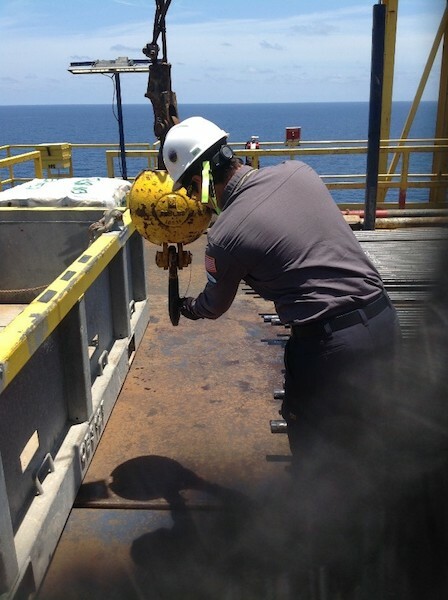In June, the Bureau of Safety and Environmental Enforcement concluded two weeks of performance-based risk inspections offshore and compiled 15 findings and associated recommendations.
The recommendations focused on dropped object prevention programs, hazard hunts, cargo and pipe handling, and associated training programs.
BSEE inspectors visited 20 different facilities between June 1 and June 11. BSEE engineers, inspectors, and safety and environmental management system specialists scrutinized the extensive inspection data, compiled the findings, conclusions, and associated recommendations and shared them with the participating operators, safety organizations and through a BSEE Safety Alert.
Among the 15 findings and conclusions BSEE found that:
- Operators practiced good barrier management while lifts were taking place and in the presence of moving equipment on the rig floor; however, on lifts not associated with the rig floor, and work above decks on production facilities, restricted access areas need improvement.
- Most operators did not have specific training requirements for the prevention of dropped objects for the offshore personnel at the facilities.
- While all the facilities had an established Management of Change (MOC) program, there were no recent MOCs associated with mounting new fixtures to existing structures or equipment.
- Operators completed Job Safety Analyses (JSA) for operations; however, multiple gaps were identified.
BSEE also recommended operators and contractors:
- Conduct focused “Hazard Hunts” to reduce the likelihood of a dropped object incident.
- Develop a “prevention of dropped objects” strategy and action plan to identify and assess individual work areas and activities for dropped object potential.
- Establish regular inspection frequencies of areas for identifying any potential dropped objects and record the results within a work order register.
- Evaluate all lifting JSAs to ensure they address the control of objects with the potential to fall.
Added in March 2018, PBRIs are one of two components that make up BSEE’s Risk-Based Inspection Program. The second is the Facility Based Risk Inspection, which focuses on risk at a specific facility, whereas PRBIs focus on reducing the likelihood of events and compliance issues on the entire Outer Continental Shelf.
“Risk-based inspections are a vital component of BSEE’s overall inspection program, ensuring safe and environmentally sustainable operations offshore," said BSEE Gulf of Mexico Region Director Lars Herbst. “These risk-based inspections focus on specific high-risk operations and help reduce the likelihood of future incidents on the Outer Continental Shelf.”
The RBI program supplements the annual inspection program and allows BSEE the opportunity to be more targeted in reducing offshore operational dangers. By focusing on higher risk facilities and operations, BSEE can more efficiently and effectively manage inspection resources. The program employs a systematic approach, using both a quantitative risk model as well as subjective performance and risk related intelligence information to identify higher-risk facilities or operations on which to focus inspections and resources.
Conducted at least quarterly, BSEE has performed 11 performance-based risk inspections and 13 facility-based risk inspections since 2018.
Overall, the objective and scope of the BSEE risk-based inspection program is to assist BSEE with the development of inspection tasks and techniques to enhance its focus on offshore oil and gas facilities that exhibit a number of distinguishing risk factors, to minimize redundant inspection efforts and cost, and to encourage continuous improvements in risk management for offshore operations.




